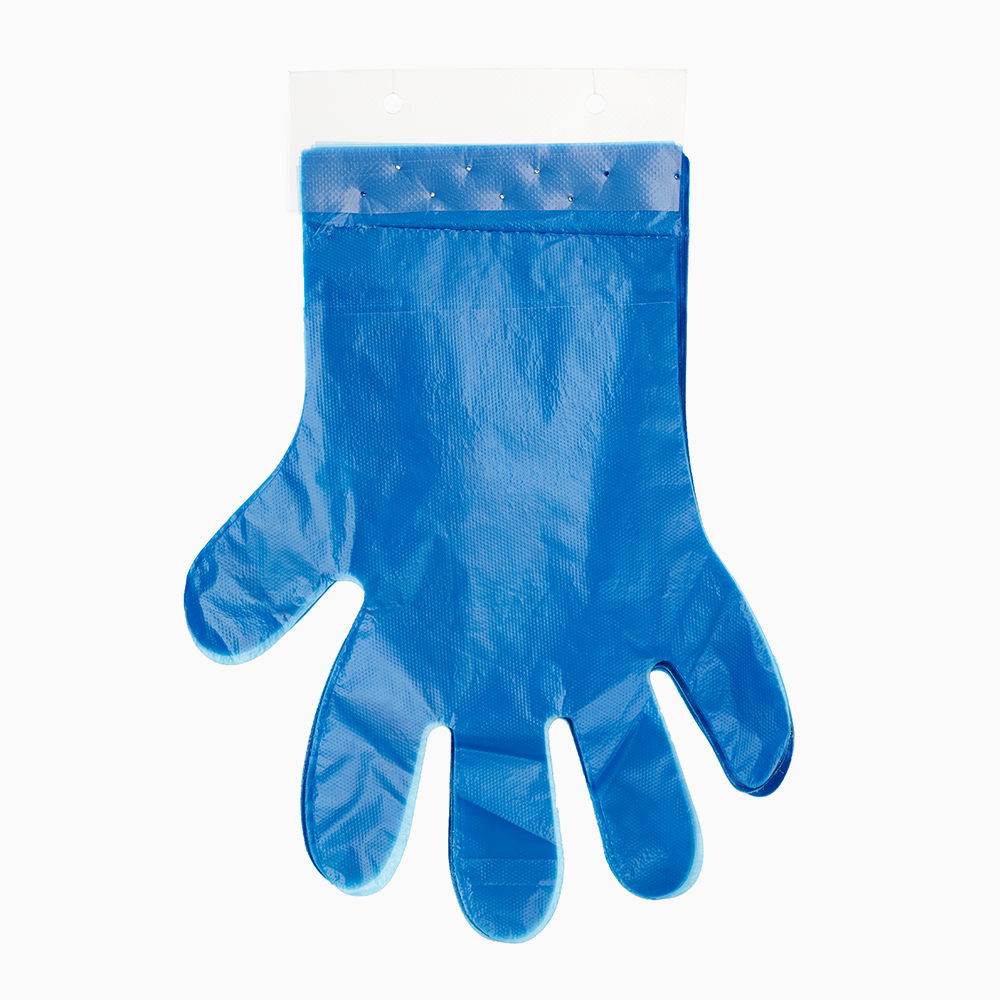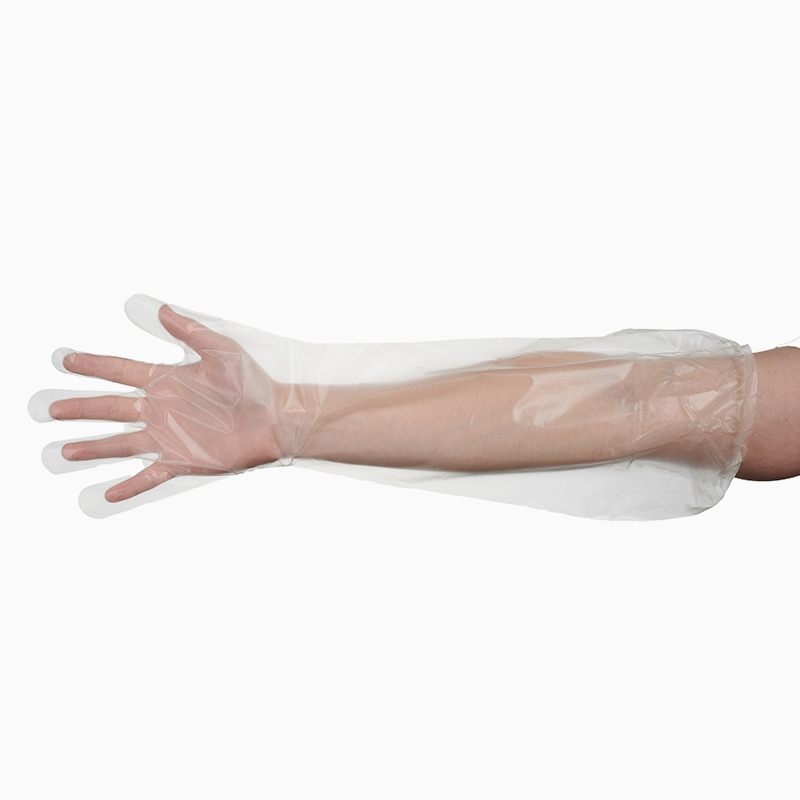Nitrile gloves and disposable latex gloves are two common types of disposable gloves, and we will compare them in terms of material, resistance, price, allergenicity, and environmental friendliness.
– – – – – – – – – – – – – – – – – – – – – – – – – – – – – – – – – – – – – – – – – – – – – – – –
Material
Nitrile gloves are made of nitrile rubber, while disposable latex gloves are made of natural latex.
The main raw material of disposable nitrile disposable gloves is nitrile rubber.
Nitrile rubber is a synthetic rubber, usually consisting of nitrile monomer with other copolymers. Nitrile rubber is a high-performance synthetic material with excellent resistance to oil, abrasion, chemicals, static electricity and corrosion, and is therefore widely used in the production of disposable gloves for medical, laboratory and industrial applications. In addition, the production of disposable nitrile disposable gloves requires other auxiliary materials such as antioxidants, plasticizers, and vulcanizing agents to ensure that the gloves have the proper flexibility and performance. During the production process, manufacturers also need to conduct rigorous screening and testing of raw materials to ensure that the quality of the gloves meets the relevant standards and requirements.

The latex for disposable latex disposable gloves is obtained from the natural rubber tree.
The natural rubber tree is a tropical plant that grows mainly in regions such as Asia and South America. The bark of the rubber tree contains rubber emulsion, which can be obtained in its raw form by cutting grooves in the trunk of the tree and collecting the rubber emulsion. Natural rubber emulsion is a white liquid consisting mainly of water, rubber particles and other substances, where the rubber particles are polymerized from high molecular weight natural rubber. In rubber industry production, natural rubber emulsions are processed to remove impurities and dehydrated to obtain pure latex. These latexes can be used in the manufacture of various rubber products, such as gloves, hoses, seals, etc. It should be noted that there is a certain risk of allergy to natural latex. For people who are allergic to natural latex, they should choose to use gloves made of other materials.

– – – – – – – – – – – – – – – – – – – – – – – – – – – – – – – – – – – – – – – – – – – – – – – –
Resistance
Are nitrile disposable gloves more durable, chemical resistant and abrasion resistant than latex gloves?
Yes.
Here is a comparison of the two types of gloves:
How do latex gloves and nitrile gloves compare in terms of durability and puncture resistance?
Durability:
Latex disposable gloves are more elastic than nitrile disposable gloves, which means they are more likely to break or tear when stretched to their limit.
Nitrile gloves are made of a synthetic material that is more resistant to wear and tear, making them more durable in the long run.
Puncture Resistance:
Nitrile gloves have a higher puncture resistance than latex disposable gloves, making them less likely to rip or tear when exposed to sharp objects or rough surfaces.
Latex gloves are more likely to tear or puncture when exposed to chemicals or solvents, whereas nitrile disposable gloves offer better chemical resistance.

Chemical Resistance: Nitrile disposable gloves typically have better chemical resistance to many organic solvents, petroleum products, chemicals, etc. Latex disposable gloves have relatively poor chemical resistance and cannot be used to handle some chemicals.
Abrasion Resistance: Nitrile disposable gloves are more resistant to abrasion than latex gloves, especially if frequent rubbing, stretching or tearing is required during use.
It should be noted that although nitrile disposable gloves are better than latex disposable gloves in some respects, latex gloves are a better choice for people who are allergic to nitrile. In addition, when using gloves, whether they are nitrile or latex, you need to pay attention to proper usage and precautions to ensure that they maximize their performance.

– – – – – – – – – – – – – – – – – – – – – – – – – – – – – – – – – – – – – – – – – – – – – – – –
Price
Are nitrile gloves more expensive than latex gloves?
Not really.
Starting in 2022, the price of nitrile and latex disposable gloves will be almost the same in the Chinese market. Latex gloves are even slightly more expensive than nitrile disposable gloves.

In the past, when nitrile gloves were first emerging, the price of nitrile disposable gloves was higher.
The prices of nitrile and latex gloves usually vary depending on factors such as brand, material quality, production area, lot size and supply and demand. However, in general, the price of nitrile gloves of the same quality and specifications will be higher than the price of latex disposable gloves. This is due to the higher cost of nitrile materials, the more complex and rigorous production process of nitrile gloves, and the fact that nitrile disposable gloves have more advantages in terms of use, making them relatively more expensive. In contrast, the cost of latex gloves is lower, and the production process is relatively simple, and their prices are relatively cheap. But it should be noted that price is not the only consideration, you need to choose the right gloves according to the specific needs, uses and special requirements, and choose a reasonably priced product under the premise of quality assurance.
– – – – – – – – – – – – – – – – – – – – – – – – – – – – – – – – – – – – – – – – – – – – – – – –
Allergenicity
Some people may be allergic to natural latex, with nitrile gloves will be allergic?
Not necessarily. Nitrile disposable gloves may also cause allergic reactions.

How do latex gloves and nitrile gloves differ in terms of allergy risk?
Latex gloves are made of natural rubber, which contains natural proteins, while nitrile disposable gloves are made of synthetic nitrile rubber, so the allergenicity of the two types of gloves is different. According to the American Academy of Allergy, Asthma, and Immunology, up to 6% of the general population and up to 17% of healthcare workers may be allergic to latex.
For some sensitive people, latex disposable gloves may trigger allergic reactions, such as rashes, itching, and difficulty breathing, because the body’s immune system reacts allergically to the proteins in latex. Nitrile disposable gloves, on the other hand, have relatively few allergic reactions because their material does not contain natural proteins.
However, it is important to note that nitrile disposable gloves can also cause allergic reactions, especially for those who are allergic to rubber or other synthetic materials. Therefore, when choosing gloves, you need to choose according to your own allergies and special requirements in order to avoid allergic reactions.
If you have a history of allergies, it’s important to consult with a healthcare professional to determine the best type of glove to use to minimize your risk of an allergic reaction.
– – – – – – – – – – – – – – – – – – – – – – – – – – – – – – – – – – – – – – – – – – – – – – – –
Environmental friendliness
Are natural latex gloves biodegradable?
Yes. Because they are biodegradable.
Can nitrile gloves be degraded?
Yes. But it will take longer than latex.
Are latex gloves more environmentally friendly than nitrile gloves?
No.

How do latex gloves and nitrile gloves affect the environment?
Both natural latex and nitrile disposable gloves have certain advantages and disadvantages from an environmental standpoint.
Natural latex disposable gloves are derived from natural rubber trees, which are made from renewable natural resources and have relatively little impact on the environment, and are also degradable. However, there are environmental issues such as energy consumption and chemical use in the latex production process, and latex gloves are not suitable for contact with oils and organic solvents, which may create environmental problems in some specific situations.
Nitrile disposable gloves are made from the synthetic material nitrile rubber, which consumes less natural resources in their production compared to latex disposable gloves, and can also be recycled and used. In addition, nitrile disposable gloves are more durable, resistant to chemicals and abrasion, and can be reused, which also reduces the environmental impact. However, the production process of nitrile disposable gloves also uses chemicals and consumes energy, and the environmental impact of nitrile gloves, which do not readily degrade, needs to be taken into account.
Therefore, from an environmental point of view, both natural latex and nitrile disposable gloves have their advantages and disadvantages, and you need to choose the right product for you according to the specific situation and requirements. Attention also needs to be paid to the proper use and handling of gloves in order to reduce the negative impact on the environment.
We discuss the differences, advantages and disadvantages of nitrile and latex gloves, which include the following:
– Raw material: Nitrile disposable gloves are made of nitrile rubber, while latex gloves are made of natural latex.
– Durability: Compared to latex disposable gloves, nitrile disposable gloves are more durable, chemical resistant and resistant to wear and tear.
– Allergenicity: Latex gloves can trigger rubber allergies, while nitrile disposable gloves are relatively less allergenic.
– Price: In general, nitrile disposable gloves are slightly more expensive than latex disposable gloves in the Chinese market.
– Environmental friendliness: Natural latex gloves come from renewable natural resources, but there are some environmental problems with the production process; nitrile disposable gloves are relatively more resource efficient, but there are also problems with chemicals and energy consumption in the production process.
When choosing gloves, trade-offs need to be made based on actual needs and circumstances, and attention needs to be paid to the proper use and handling of gloves to reduce the negative impact on the environment and human health.
Other comparisons
– – – – – – – – – – – – – – – – – – – – – – – – – – – – – – – – – – – – – – – – – – – – – – – –
What are the best applications for latex gloves and nitrile gloves?

Latex gloves and nitrile gloves have different properties that make them suitable for different applications. Here are some of the best applications for each type of glove:
Latex Gloves:
– Medical settings: Latex gloves are commonly used in medical settings, such as hospitals and clinics, as they provide excellent tactile sensitivity and barrier protection.
– Food handling: Latex disposable gloves are also suitable for food handling and preparation, as they offer good grip and are resistant to punctures and tears.
Nitrile Gloves:
– Chemical handling: Nitrile disposable gloves are highly resistant to a wide range of chemicals, making them an ideal choice for chemical handling and laboratory work.
– Automotive and mechanical work: Nitrile disposable gloves are also popular in automotive and mechanical work, as they offer excellent puncture resistance and durability.
Overall, it’s important to choose the right type of glove for your specific application to ensure maximum protection and safety.
– – – – – – – – – – – – – – – – – – – – – – – – – – – – – – – – – – – – – – – – – – – – – – – –
How to choose the right size and fit of latex gloves and nitrile gloves?

Choosing the right size and fit of latex gloves or nitrile disposable gloves is important to ensure comfort and protection. Here are some tips on how to choose the right size and fit:
1. Measure your hand: Measure the circumference of your hand at its widest point (usually around the knuckles) using a tape measure. This measurement will help you determine the right size of glove.
2. Check the glove size chart: Each manufacturer will have their own sizing chart, so it’s important to check the size chart of the brand you plan to purchase. Compare your hand circumference measurement to the manufacturer’s size chart to find the right size.
3. Consider the fit: Gloves should fit snugly but not be too tight or too loose. A glove that is too loose may slip off or get caught on objects, while a glove that is too tight can be uncomfortable and restrict movement.
4. Try on different sizes: If possible, try on a few different sizes to determine the best fit. Keep in mind that different glove materials may fit differently, so you may need a different size for latex gloves compared to nitrile disposable gloves.
5. Check for allergies: If you have a latex allergy, choose nitrile gloves instead. Make sure to read the label carefully to ensure that the gloves are labeled as latex-free.
Overall, choosing the right size and fit of gloves is important for comfort, dexterity, and protection. It may take some trial and error to find the right size and fit, but it’s worth the effort to ensure maximum comfort and safety.
– – – – – – – – – – – – – – – – – – – – – – – – – – – – – – – – – – – – – – – – – – – – – – – –
How to store and dispose of latex gloves and nitrile gloves properly?

Proper storage and disposal of latex gloves and nitrile disposable gloves are important to prevent contamination and protect the environment. Here are some tips on how to store and dispose of gloves properly:
Storage:
1. Store gloves in a cool, dry place away from direct sunlight and heat sources.
2. Keep gloves in their original packaging until ready to use to prevent contamination.
3. Avoid storing gloves near chemicals or other substances that could damage the gloves.
Disposal:
1. Remove gloves carefully to avoid contamination. Grasp one glove at the wrist and peel it off, then use the clean glove to remove the other glove.
2. Dispose of used gloves in a waste container designated for medical or hazardous waste. Do not dispose of gloves in regular trash bins.
3. Follow local regulations for disposal of gloves. Some areas may require specific disposal methods, such as incineration or autoclaving.
4. If gloves are contaminated with hazardous materials, follow appropriate safety protocols for handling and disposal.
It’s important to note that gloves should be changed frequently, especially in healthcare and food service settings, to prevent the spread of bacteria and other pathogens. Gloves should never be reused, as this can increase the risk of contamination. By following proper storage and disposal procedures, you can help protect yourself, others, and the environment.
– – – – – – – – – – – – – – – – – – – – – – – – – – – – – – – – – – – – – – – – – – – – – – – –
How to test the quality of latex gloves and nitrile gloves?

Testing the quality of latex gloves and nitrile disposable gloves is important to ensure they provide adequate protection and meet safety standards. Here are some ways to test the quality of gloves:
- Visual inspection: Inspect gloves for any visible defects, such as holes, tears, or discoloration. Gloves that have visible defects should not be used.
- Water leak test: Fill the gloves with water and hang them upside down for two minutes. If any water leaks out, the gloves have failed the test and should not be used.
- Air inflation test: Inflate gloves with air and check for any leaks. Gloves that deflate quickly or have visible leaks are not suitable for use.
- Tensile strength test: Use a tensile strength tester to measure the force required to stretch a glove until it breaks. Gloves with higher tensile strength are generally more durable and resistant to tears.
- Chemical resistance test: Test gloves for resistance to chemicals by exposing them to a specific chemical for a set amount of time and checking for any signs of degradation or permeation.
- ASTM standards: Look for gloves that meet ASTM standards for gloves, which provide guidelines for barrier performance, durability, and other factors.
It’s important to note that testing the quality of gloves should be done by trained professionals using appropriate equipment. In addition to testing, it’s also important to choose gloves from reputable manufacturers that meet safety standards and have a good reputation for quality.










